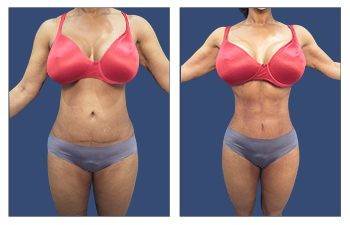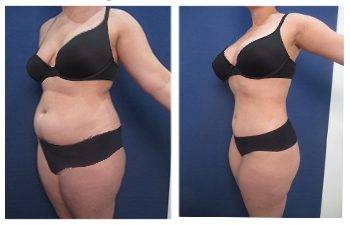Introduction to Internal vs External Radiofrequency in Cosmetic Surgery
The field of cosmetic surgery has witnessed significant advancements over the years, with radiofrequency (RF) technology emerging as a pivotal innovation. This technology, which utilizes energy waves to generate heat, has revolutionized various cosmetic procedures. RF technology is broadly categorized into two types: internal versus external radiofrequency in Cosmetic Surgery. Each type offers unique benefits and applications, catering to diverse patient needs and cosmetic goals. Here is comprehensive information about radiofrequency in cosmetic surgery
Understanding Radiofrequency Technology
Radiofrequency technology harnesses the power of radio waves, a form of electromagnetic radiation. In cosmetic surgery, RF energy is used to heat the dermis, the skin’s deeper layer, without damaging the epidermis or outer layer. This heating stimulates collagen production, leading to skin tightening and rejuvenation. The versatility of RF technology lies in its ability to be applied both externally and internally, each method having distinct mechanisms and outcomes.
External Radiofrequency Devices: Non-Invasive Skin Rejuvenation
External RF devices are non-invasive, applying RF energy to the skin’s surface. These devices are primarily used for skin tightening, wrinkle reduction, and overall facial rejuvenation. The external application ensures minimal discomfort and downtime, making it a popular choice for patients seeking less invasive procedures.
Advantages of External RF Devices
- Non-Invasive Nature: The biggest advantage of external RF devices is their non-invasive approach, which significantly reduces recovery time and the risk of complications.
- Versatility: External RF can be used on various body parts, including the face, neck, abdomen, and limbs.
- Safety: These devices have a strong safety profile, with minimal risk of burns or other serious side effects when operated by a trained professional.
Limitations of External RF Devices
- Subtler Results: The non-invasive nature often translates to less dramatic results compared to surgical or internal RF methods.
- Multiple Sessions Required: Patients typically need multiple sessions to achieve desired outcomes.
Limited Efficacy for Severe Laxity: External RF is less effective for patients with significant skin laxity or deep wrinkles.

External Radiofrequency Devices
Thermage® by Solta Medical: Thermage is one of the most recognized names in external RF technology. It’s widely used for non-invasive skin tightening and contouring. Thermage utilizes a unique monopolar RF technology to heat the deeper, collagen-rich layers of the skin.
Venus Legacy™ by Venus Concept: Venus Legacy is known for its multipolar RF technology combined with pulsed electromagnetic fields. This device is used for skin tightening, cellulite reduction, and wrinkle reduction.
Exilis® by BTL Aesthetics: Exilis uses a combination of ultrasound and RF energies for skin tightening and fat reduction. It’s popular for its versatility and can be used on various body parts, including the face and neck.
Profound® by Candela: Profound is a unique device that combines microneedling with radiofrequency. It’s particularly effective for treating sagging skin and volume loss, offering results that are closer to surgical outcomes.
Internal Radiofrequency Devices: A Surgical Approach to Skin Tightening
Internal RF devices involve minimally invasive techniques, where RF energy is delivered beneath the skin’s surface. This method is often integrated into procedures like liposuction, providing skin tightening benefits in addition to fat removal.
Advantages of Internal RF Devices
- Enhanced Efficacy: Internal RF can provide more pronounced skin tightening and contouring results than external RF.
- Targeted Treatment: By delivering energy directly to the dermis, internal RF can more effectively remodel collagen and address specific areas of concern.
One-Time Procedure: Unlike external RF, internal RF often requires only a single treatment session.
Limitations of Internal RF Devices
- Invasiveness: Being a minimally invasive procedure, it involves small incisions and a higher risk of complications than external RF.
- Recovery Time: Patients may experience a longer recovery period compared to non-invasive treatments.
- Limited Application: Internal RF is often not suitable for all areas of the body or all skin types.
Internal Radiofrequency Devices
- BodyTite™ by InMode: BodyTite is a minimally invasive device that delivers RFAL (Radio-Frequency Assisted Lipolysis). It’s designed for body contouring and significant skin contraction, often used in conjunction with liposuction.
- Renuvion J Plasma of Apyx: Renuvion subdermal coagulation is a unique ability to thermally heat the fibroseptal network allowing the skin to retract up to the underlying muscles and thereby reducing skin elasticity.
- Attiva Facial Skin Treatment: Attiva skin treatment allows for the direct transmission of thermal energy to the fibroseptal network allowing the skin to retract up to the underlying muscles and thereby reducing skin elasticity and thus rejuvenating your eyes, face, and neck.
- ThermiRF® by Thermi: ThermiRF is a versatile system that offers both minimally invasive and non-invasive applications. For internal use, it’s often employed in ThermiTight, a procedure that delivers controlled thermal energy under the skin to reverse the effects of aging.
Comparative Analysis of Internal versus External Radiofrequency in Cosmetic Surgery
When comparing internal versus external radiofrequency in cosmetic surgery, several factors must be considered, including the patient’s specific needs, the area being treated, and the desired outcome. Internal RF is more suited for patients looking for more significant skin tightening and contouring, especially in conjunction with liposuction. On the other hand, external RF is ideal for patients seeking a non-invasive approach to address mild to moderate skin laxity and wrinkles.
Patient Selection and Customized Treatment Planning
In cosmetic surgery, patient selection and individualized treatment planning are crucial for optimal outcomes. Factors such as skin type, age, extent of skin laxity, and overall health play a significant role in determining the most appropriate RF treatment. A thorough consultation, including a detailed medical history and physical examination, is essential in guiding the choice between devices that are internal versus external radiofrequency in cosmetic surgery.
Technological Innovations and Future Directions
The field of RF technology in cosmetic surgery is continuously evolving, with new advancements enhancing both efficacy and safety. Future developments are expected to offer even more precise and customizable RF treatments, potentially combining internal and external applications for comprehensive rejuvenation. This is why the difference between internal versus external radiofrequency in cosmetic surgery is relevant.
Conclusion: Embracing the Spectrum of RF Technology by understanding internal versus external radiofrequency in Cosmetic Surgery
Radiofrequency technology, in both its internal and external forms, has become a cornerstone in the realm of cosmetic surgery. By offering a range of options from non-invasive skin tightening to more intensive contouring procedures, RF technology caters to a diverse patient population. As technology advances, it holds the promise of further revolutionizing cosmetic treatments, providing patients with safer, more effective, and more personalized options for aesthetic enhancement.
The choice between internal versus external radiofrequency in cosmetic surgery ultimately depends on individual patient needs, desired outcomes, and the expertise of the cosmetic surgeon. As a dynamic and evolving field, cosmetic surgery continues to embrace these technological advancements, ensuring that patients receive the most advanced care tailored to their unique aesthetic goals.
















